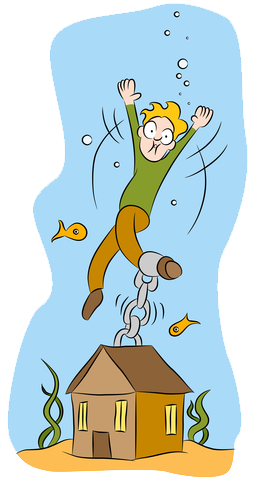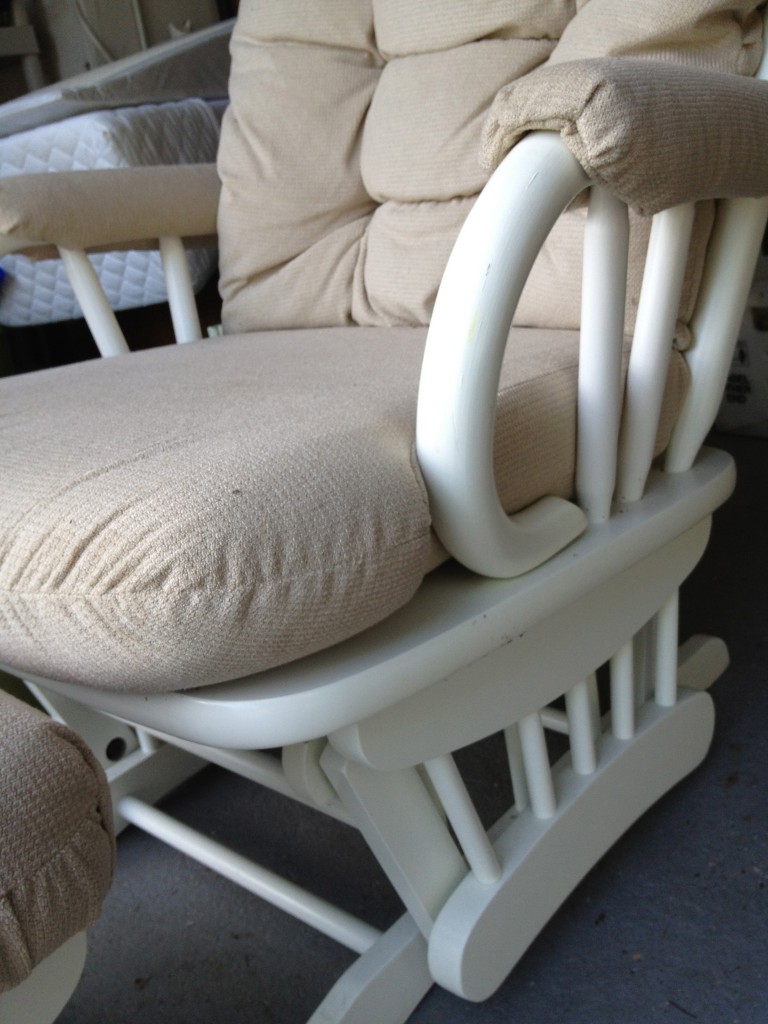Thanks to
our frenzied summer to declutter, we needed to get rid of all our extra stuff– and there’s no better way to do so than having a yard sale that will leave you with room to breathe AND loads of cash in your pocket! We had a garage sale this past weekend and counted up almost $900 buckaroos at the end of the day– WAY more that we expected, especially since we only sold one big ticket item. There were several tricks and tips that I believe led to our success so I wanted to share them with you– and hear your tips as well!

Your Stuff: One thing that helped was to systematically declutter each nook of our home this summer. Each time I found items for the sale I place them in a pile in our basement. That pile was OUT OF CONTROL, yo. Like, ready to invade our home at a moment’s notice. It was either have a yard sale or star-on-an-episode-of-Hoarders type pile. Even if you don’t have time to totally declutter, hit the major areas: kitchen cabinets, clothing, bookshelves, garage, basement. Do you have extra furniture hanging out? Toys that are outgrown? Now’s the time to let them go.
Know your Goal: Why are you having a yard sale? To get rid of stuff or make money? A little of both? Knowing your objective will help when you are pricing, negotiating, and packing up the leftovers. On the fence with a price and just want to get rid of stuff? Go lower. Are you a serial yard saler and will have another sale next year? Price what you’d like to get and hope to get it. Our goal was to get rid of stuff, so when negotiating we knew to let it go rather that haggle too much.
Advertising: These days, your best (and FREE) advertising will probably be Craigslist. I also paid $5 to advertise online in my local newspaper (print ads are outrageously priced here). Here’s my tips for the perfect online Craigslist ad:
- Upload photos of some of your items for sale, put don’t have them look creepy or disgusting. Seriously, you want people to be attracted to your sale and not report you to the authorities. If you need to crop or style it then do so, but make sure the photos look inviting!
- Make it snappy. Put some personality into the ad. People commented on how much they enjoyed reading our ad because I attempted some lame humor in there. As always.
- Include a list of some of the types of items you’ll have. Got kids clothes that are higher end? List that! And if you have great prices on stuff, list that too. It’s one thing to know a seller has Ann Taylor clothing, another to know it’s only $3 a piece.
I put this photo in my ad and by 8:30am had sold $150 worth of kids clothes.
Signage: Perhaps the best thing you can do for yourself is have excellent signage. Great signs will easily lead people who read your ads to your sale, AND attract people driving by. Make sure the letters are neat and BIG. Put them on each major corner in your area, especially on main streets. You only need three things on your sign:
- the words Yard Sale or Garage Sale
- date and time
- a big arrow in the direction to drive
- address is optional; if it’s not easy to read while you drive by quickly, don’t add it! Just be sure to have signs that lead to your home.
Here’s three options for lawn signs if you don’t have a pole to hang one. Tape a sign to the side of a cardboard box, drop a brick or large stone inside, and you have a great sign that won’t blow away. If you have yard signs from work you’ve had done, keep them! Tape signs to each side and you have an attention getter for sure. The Dollar Store often has Garage Sale lawn signs for only $1, when you see them stock up.
Be a good neighbor. Collect your signs that night. Littering is for dorks.
Pricing: Whew, this is a toughie. Conventional wisdom says to price at 1/3 the retail value, and that could hold true. But times are tight, so people won’t always pay that amount. For example, I priced my clothes at $3 each and trust me they didn’t cost $9 retail. Pricing it right allowed me to let it go AND make some money for a new fall wardrobe.

It was helpful to
ask my buds on Instagram about what to price things, especially furniture– they were very honest!
Put price tags on everything. It’s extra work but people really don’t want to ask how much something costs every few minutes. For grouped items like books, hang a sign with the prices.
Here’s what I priced the most common items, with some wiggle room:
- Books: hardcovers $1, paperbacks .50, children’s paperbacks .25
- Kids Clothes (mostly Gymboree, GAP, & Carters) $2 a piece
- Kids Shoes (mostly Stride Rite and Keens) $3 a pair
- Women’s Clothing (mostly Ann Taylor, Loft, Banana Republic, J. Crew) $3 a piece– I could do way better on eBay but I wanted to get rid of it!
- Toys $1-$3
- Planters $2 each, Gift Bags .25 each
Group Like Items: This will really help your sale! Put like items together. I like to have a table of books, one of home decor, toys on a tarp on the ground, sports equipment, etc. Here’s a few examples of other things to group together:
- box of extra fabric pieces: price it around .50 a piece and watch them sell
- toys: group all those small annoying things in a bag, price the bag for a buck, sold!
- jewelry: jewelry is HUGE. Have outdated pieces or costume jewelry? Price it at .50 up to a few dollars, KEEP IT AT THE CASHIER’S TABLE, and you’ll have a goldmine. I bagged each piece and laid it in a shallow tray, everyone took a look and it sold so quickly.
- kids clothes: if you have a lot of clothing in various sizes, it works well to have it folded in boxes labeled by gender and size. This was a very popular item!



Display: Make it look inviting. Tables are important, ask friends to borrow some if you don’t have enough. Place your for-sale throw pillows on your for-sale chairs. One mistake we made was using our furniture for sale to hold boxes of stuff. In hindsight, I wish I’d borrowed a few utility tables for the book and clothing boxes and kept the furniture looking it’s best– perhaps with a lamp for some plates on top instead of being covered by boxes. That being said, they looked neat all lined up on tables and it was a great height for browsing.
We have an IKEA wardrobe rack that I use year round in the basement, so it really comes in handy for the occasional yard sale. I needed an extra one so I made it from two ladders and a pole held together strongly with duct tape!
Free Pile: Each time we have a yard sale, we have a pile of free things that we place by the curb. Carpet remnants, old plastic chairs, paint cans, even my old teaching worksheets– it attracts drive-bys and everyone loves something for free. Be sure to announce your free pile in your online ad!
After the Sale: If your goal was to get rid of clutter (like mine!), then this is one of the most important steps. Load your leftovers IMMEDIATELY into your car, and drive them to a thrift store. When you get home you’ll have your yard sale cash in your pocket, a decluttered home, and probably be totally exhausted yet fulfilled! I’ll admit that we kept the furniture we didn’t sell so we could sell it on Craigslist, and my leftover kids’ books are going straight to a Philly school.
On that note, if anyone in the Philly area is looking for a deal on a coffee table / end table set, glider with ottoman, or a counter height kitchen set I’m your girl. HA!
There you have it, a few tips that will help you have a ROCKSTAR garage sale. CASH MONEY in your pocket and a clutter free home– what do you have to lose? {Clutter! You’ll lose your clutter!} What are your killer yard sale tips? Share ‘em in the comments! And be sure to pin it for next summer if you’re not ready to have a yard sale this fall. You’ll have all winter to declutter, you lucky peep!


























